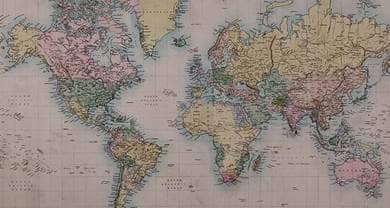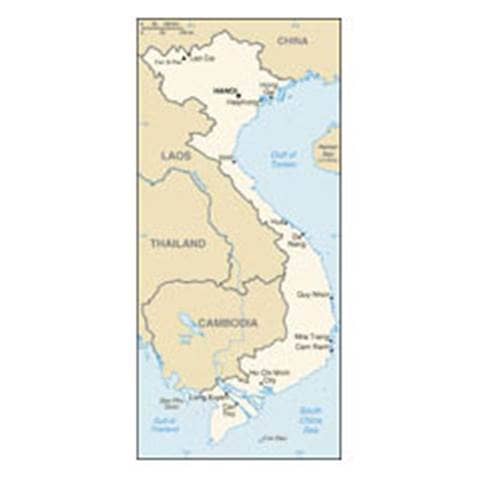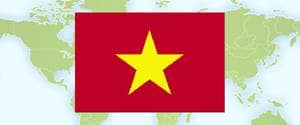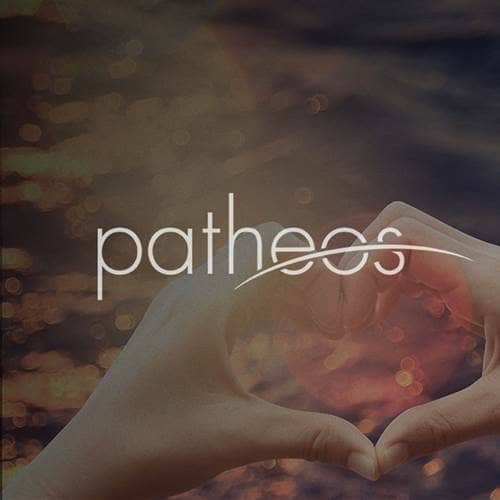- Trending:
- Forgiveness
- |
- Resurrection
- |
- Joy
- |
- Feminism
- |
- Afterlife

RELIGION LIBRARY
Vietnam

The country has an area of 127,000 square miles and a population of 86 million. Some estimates suggest more than half of the population is at least nominally Buddhist. The Roman Catholic Church constitutes 8 to 10 percent. Several Cao Dai organizations constitute 1.5 to 3 percent, the primary Hoa Hao organization 1.5 to 4 percent, Protestant denominations 0.5 to 2 percent, and one Muslim organization less than 0.1 percent of the population. Most other citizens consider themselves nonreligious, although some practice traditional beliefs such as veneration of ancestors and national heroes.
Many Buddhists practice an amalgam of Mahayana Buddhism, Taoism, and Confucianism that is sometimes called the "triple religion." The Government Committee for Religious Affairs (CRA) cites an estimate of 10 million (12 percent of the population) practicing Mahayana Buddhists, most of whom are members of the ethnic Kinh community (the country's majority group, also referred to as Viet) and found throughout the country, although many consider this a low estimate. There are proportionally fewer Buddhists in certain highland areas, although migration of Kinh to these areas is changing the distribution. In Ho Chi Minh City alone, there are more than 1,000 active Buddhist pagodas. A Khmer ethnic minority in the south practices Theravada Buddhism and has more than 570 pagodas. Numbering more than 1 million, they live almost exclusively in the Mekong Delta.
In 1981 the officially sanctioned Vietnam Buddhist Sangha (VBS) was established incorporating all Mahayana, Theravada, and Bhikshu Buddhism under its umbrella. All Buddhist groups within the VBS are proportionally represented throughout the leadership structure and organization. In practice Theravada monks meet separately to determine issues such as doctrine, education, and other community needs to raise within the VBS.
The Government requires all Buddhist monks, including Khmer Krom monks who practice the Theravada tradition, to be approved by and work under the government-sponsored, officially recognized Buddhist organization, the VBS. The CRA in theory regulates the number of Buddhist student monks, although the number of Buddhist academies at the local and provincial levels, in addition to four university-equivalent academies, has greatly increased in recent years.
Since the Government's merger of all Buddhist organizations into the VBS, the Government does not recognize the legitimacy of the UBCV. There are several newly recognized religious organizations that have Buddhist influences, although they are separate and distinct from the VBS. Of these, the Pure-Land Buddhist Home Practice faith has the largest membership with more than 1.3 million followers.
There are an estimated 8 million Catholics, although government statistics place the number at 6.15 million. Catholics live throughout the country, with the largest concentrations in the southern provinces around Ho Chi Minh City, in parts of the Central Highlands, and in the provinces southeast of Hanoi. Catholicism has revived in many areas in recent years, with newly rebuilt or renovated churches and growing numbers of people who want to be religious workers.
Government statistics put the number of Cao Dai at 2.3 million, although Cao Dai officials routinely claim as many as 5 million adherents. Cao Dai groups are most active in Tay Ninh Province, where the Cao Dai "Holy See" is located; in Ho Chi Minh City; and throughout the Mekong Delta. There are separate groups within the Cao Dai religion; the largest is the Tay Ninh sect, which represents more than half of all Cao Dai believers and more than 40 percent of the population of the province. Cao Dai is syncretic, combining elements of many faiths.
According to the Government, there are 1.3 million Hoa Hao followers; affiliated expatriate groups estimate as many as 3 million adherents. Hoa Hao followers are concentrated in the Mekong Delta, particularly in provinces such as An Giang and Dong Thap, where the Hoa Hao were dominant as a social, political, and military force before 1975. The government-recognized Hoa Hao Administrative Committee (HHAC) was organized in 1999. Some Hoa Hao belong to other sects that oppose the HHAC.
The two largest officially recognized Protestant churches are the Southern Evangelical Church of Vietnam (SECV) and the smaller Evangelical Church of Vietnam North (ECVN). The Grace Baptist Church, United World Mission Church, Vietnam Mennonite Church, Vietnam Presbyterian Church, Vietnam Baptist Society (Southern Baptist), and Vietnam Seventh-day Adventist Church also are recognized officially. Other Protestant denominations also are present, including the Vietnam Christian Fellowship (officially registered), as well as others registered locally but not registered on the national level. Estimates of the number of Protestants ranged from government figures of 900,000 to claims by churches of up to 2 million. The strongest growth in Protestant believers occurred from 1996 to 2000. Some new converts belong to unregistered evangelical house churches. Based on adherents' estimates, two-thirds of Protestants are members of ethnic minorities, including minority groups in the Northwest Highlands (H'mong, Dzao, Thai, and others) and in the Central Highlands (Ede, Jarai, and Mnong, among others).
Mosques serving the small Muslim population, estimated at 60,000 to 80,000 persons, operate in Ho Chi Minh City, Hanoi, western An Giang Province, and provinces in the southern coastal area. The Government estimates there are nearly 73,000 Muslim believers. The Muslim community is composed mainly of ethnic Cham, although in Ho Chi Minh City and An Giang Province it includes some ethnic Kinh and migrants originally from Malaysia, Indonesia, and India. Approximately 40 percent of Muslims are Sunnis; the remaining 60 percent practice Bani Islam, a type of Islam unique to the ethnic Cham who live on the south-central coast.
There are several smaller religious communities, the largest of which is the Hindu community. Approximately 50,000 ethnic Cham in the south-central coastal area practice a devotional form of Hinduism. Another 4,000 Hindus live in Ho Chi Minh City; some are ethnic Cham, but most are Indian or of mixed Indian-Vietnamese descent.
There are an estimated 7,000 Baha'is, largely concentrated in the south. Baha'i followers were present prior to 1975, but open practice of the Baha'i Faith was banned from 1975 to 1992 and only received national recognition as a new religion in 2008. In May 2009 the Baha'i Faith held its second national convention with representatives from its 73 registered congregations present.
There are approximately 1,000 members of The Church of Jesus Christ of Latter-day Saints (Mormons) throughout the country. The Church has two locally recognized congregations in Ho Chi Minh City and Hanoi.
At least 50 active congregations of Jehovah's Witnesses operate. A few are registered locally, each reportedly with several hundred members. Many of the congregations are in the south, with at least 10 in Ho Chi Minh City.
There is one Jewish temple in Ho Chi Minh City. While its members are primarily foreign national expatriates, the congregation is growing.
At least 14 million citizens constituting 17 percent or more of the population reportedly do not practice any organized religion. The Government does not categorize those whose activities are limited to visiting pagodas on ceremonial holidays as practicing Buddhists. Using this stricter definition, the number of nonreligious people would be much higher, perhaps as many as 50 million. No statistics were available on the level of participation in formal religious services, but it was generally acknowledged that this number has been increasing since the early 1990s.
Ethnic minorities constitute approximately 14 percent of the population. They historically practice different traditional beliefs than those of the majority Kinh. Increasing numbers of H'mong, Dao, and Jarai in the Northwest and Central Highlands are converting to Protestantism.
| Population | Population (2009 est.) 86,967,524 |
| Religious Demographics | Buddhist 9.3%, Catholic 6.7%, Hoa Hao 1.5%, Cao Dai 1.1%, Protestant 0.5%, Muslim 0.1%, none 80.8% (1999 census) |
| Ethnic Groups | Ethnic Groups Kinh (Viet) 86.2%, Tay 1.9%, Thai 1.7%, Muong 1.5%, Khome 1.4%, Hoa 1.1%, Nun 1.1%, Hmong 1%, others 4.1% (1999 census) |
| Languages | Languages Vietnamese (official), English (increasingly favored as a second language), some French, Chinese, and Khmer; mountain area languages (Mon-Khmer and Malayo-Polynesian) |
| Country Flag |  |










